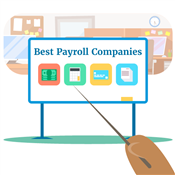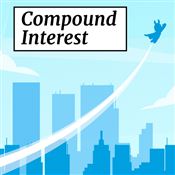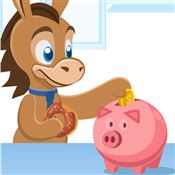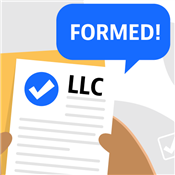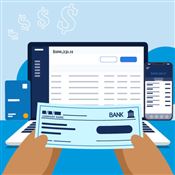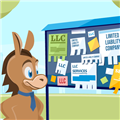Burn Rate Calculator
Business operating at a loss? Find out your company's burn rate with this calculator, plus steps you can take to turn it around.
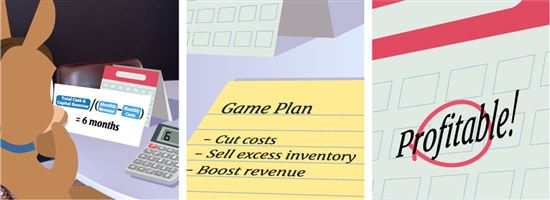 |
Burn rate measures how quickly a business is using up, or "burning", its money.
Learn how to calculate your business's burn rate below. Plus, find out how to improve your burn rate and which other important KPIs to track.
What is Burn Rate?
Burn rate measures how long a business has before its money will run out. It's used for businesses that are "loss-making", or not generating a profit.
Many startups use burn rate calculators to see how long their venture capital will last, since most are not profitable right away. But burn rate can be helpful to any business that is operating at a loss.
It shows you how much money the business uses per month. But it can also help you identify a need to cut costs, boost revenue, or increase spending.
Find out how to calculate your business's burn rate, plus other helpful metrics below.
How Do You Calculate Burn Rate?
Your net burn rate tells you how long a business can continue operating before it runs out of money.
Here's how to calculate net burn rate:
- First, total all your Cash and Capital Reserves.
- Example: $50,000
- Then, subtract your Average Monthly Receipts from your Total Monthly Costs. This is your Monthly Losses.
- Example: $10,000 - $8,000 = $2,000
- Finally, divide your total Cash and Capital Reserves by your Monthly Losses.
- Example: $50,000 / $2,000 = 25
- The result is the number of months you have until Cash Zero, so 25 months.
The number of months it gives you is how long your business has until it reaches "cash zero." At that point, your business will either close, require new funding, or must be radically changed in order to continue operation.
If your burn rate is higher than you'd like (meaning, you have few months until cash zero), don't panic. It may not be as bad as you think.
High Burn Rate: Not Always Bad
A high burn rate isn't always a bad thing. Before you make any changes to your business, keep these points in mind:
High burn rate is best for businesses that want aggressive growth (i.e., startups).
Startups will almost always burn through a lot of cash before they are profitable. To scale your business, you'll have to spend money to make money.
If your revenue has increased, your burn rate should, too.
Again, this is especially true for startups. If your sales are booming, increasing burn rate is your best move. It may take longer to be profitable, but your business will be stronger in the long run.
Startups receiving venture capital should aim for a high burn rate.
Investors gave your company money for a reason. If you're spending more to grow more, they stand to earn more on their investment. Don't be afraid to amp up burn rate if it'll pay off in the future.
Prioritize low burn rate if you're operating to "stay afloat".
Established businesses that aren't generating a profit should likely aim for a low burn. If you have less than 6 months of "runway", make calculated changes to stay afloat while you brainstorm ways to pivot.
Monitoring your burn rate is always worthwhile.
If you monitor burn rate regularly, you'll know whether your business revenue "lines up" with your spending. You'll also be able to spot potential red flags sooner or avoid them altogether.
How to Optimize Your Burn Rate
After you know your burn rate, you can take steps to optimize it. Review the below ideas to manage your burn rate according to your current business goals.
Ways to Lower Your Burn Rate
Instead of making hasty, "knee-jerk" decisions to lower your burn rate, first consider the points below:
- Thoroughly review your finances. You won't know which problems to address until you get the full picture.
- Determine if you need to focus on expenses or revenue. This will help pinpoint which actions you can take and avoid wasted time.
- Sell assets or excess inventory. If you can get by with less inventory, this can be a good way to boost cash flow.
- Brainstorm with your team. Consult your team for quick, low-friction ideas to boost revenue.
- Negotiate with your vendors. Vendors may be willing to lower their prices if you've built a good rapport with them.
Ways to Increase Your Burn Rate
Does your business needs to boost burn rate to hit its growth milestones? Here are some ideas to get you started:
- Know which stage of development your business is in. Some expenses are better suited for specific stages of development. Identify this first.
- Hire help. If your revenue has steady growth, consider expanding your team so you can focus on more high-level duties.
- Invest in marketing. A well-thought-out, smart campaign can increase brand awareness in the long run.
- Put money back in the business. Invest in your equipment, software, and customer experience and it will likely pay off.
If your burn rate indicates that you have less than six months of cash left, you may have unnecessary expenses or missed opportunities in revenue. However, startups with a high burn rate may be just fine since they usually have to spend more to earn more. Keep in mind, there's no "perfect" burn rate. What's right for your business largely depends on your industry and other factors.
Other Important Metrics for Businesses
There are a number of different metrics that can help you gauge the health of your business. Here are a few key performance indicators (or, KPIs) to keep track of:
- Sales Revenue: Your income from customer purchases, minus the costs associated with returns or undeliverable products.
- Net Profit Margin: Your monthly revenue, minus all expenses associated with sales.
- Customer Satisfaction: Try asking customers to fill out brief online surveys to see how likely they are to use your business again.
- Sales Growth Year-over-Year: Difference between current sales revenue and last year's sales revenue at the same date.
- Cost of Customer Acquisition: Total costs associated with "acquiring" a new customer, such as marketing.
These are just a handful of helpful KPIs to track, but there are dozens (maybe even hundreds) more. Some may be more helpful than others, so be sure to research what's standard for your industry.
Bottom Line
If your business is operating at a loss, calculating your burn rate is a good first step toward taking action.
Keep in mind, a high burn rate may be relatively normal for some types of businesses, like startups. It's important not to overreact to this metric and understand the full picture before making any decisions.
Holly Zorbas is a assistant editor at CreditDonkey, a credit card comparison and reviews website. Write to Holly Zorbas at holly.zorbas@creditdonkey.com. Follow us on Twitter and Facebook for our latest posts.
|
|
| ||||||
|
|
|


